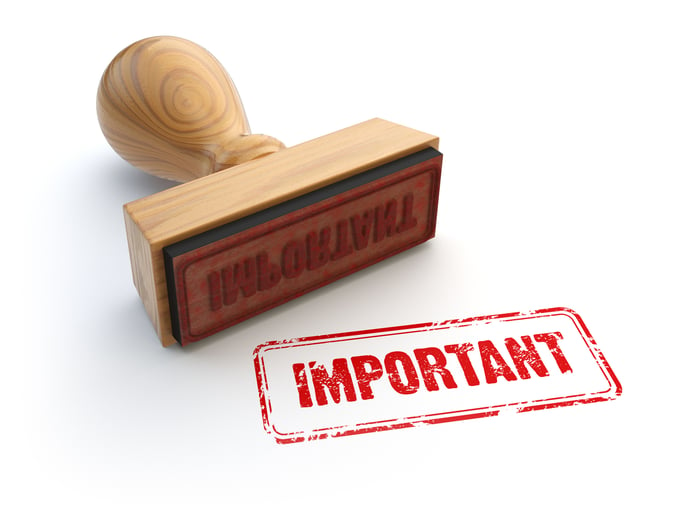Don't wait until you're retired or a few years away from it to start thinking about Social Security. It's likely to supply a hefty chunk of your retirement income, so it's worth knowing all about it -- and, importantly, how to maximize those benefits.
For context, know that the average monthly retirement benefit was recently $1,517, which amounts to $18,204 for the year. That's not likely to be sufficient for most people, but the good news is that if you earned an above-average income in your working life, you'll get more than that. Also, there are some ways to increase your Social Security benefits.

Image source: Getty Images.
Your full retirement age
Some of the most important things to know about Social Security are encapsulated in a single important chart, but before we get to that chart, here's another graphic, to set the stage. The table below will help you identify what your full retirement age (FRA) is. That's the age at which you can collect the full benefits to which you're entitled, based on your work history.
|
Birth Year |
Full Retirement Age |
|---|---|
|
1937 or earlier |
65 |
|
1938 |
65 and 2 months |
|
1939 |
65 and 4 months |
|
1940 |
65 and 6 months |
|
1941 |
65 and 8 months |
|
1942 |
65 and 10 months |
|
1943-1954 |
66 |
|
1955 |
66 and 2 months |
|
1956 |
66 and 4 months |
|
1957 |
66 and 6 months |
|
1958 |
66 and 8 months |
|
1959 |
66 and 10 months |
|
1960 and later |
67 |
Data source: Social Security Administration.
Got it? For most of us, the relevant full retirement age will be 66 or 67.
The most important Social Security chart
So what's the most important Social Security chart? It's one that shows how you can make your retirement benefits bigger -- or how they can shrink -- depending on when you start collecting them. The earliest age at which you can start collecting your retirement benefits is 62, and the latest age is 70. Your full retirement age is somewhere in between. For every year beyond your FRA that you delay starting to collect, your retirement benefits will grow by 8%. Start collecting before that age, and your benefits will shrink. See for yourself:
|
Start Collecting at Age: |
% Benefit if FRA Is 66 |
% Benefit if FRA Is 67 |
|---|---|---|
|
62 |
75% |
70% |
|
63 |
80% |
75% |
|
64 |
86.7% |
80% |
|
65 |
93.3% |
86.7% |
|
66 |
100% |
93.3% |
|
67 |
108% |
100% |
|
68 |
116% |
108% |
|
69 |
124% |
116% |
|
70 |
132% |
124% |
Data source: Social Security Administration.
So, for example, if your full retirement age is 67, delaying starting to collect until age 70 will give you 124% of your benefits, turning a $2,000 check into a $2,480 one. Starting to collect at age 62 will turn a $2,000 benefit into a $1,400 one. Those look like massively different benefits, suggesting that it's crazy to not wait until age 70 if you can, but remember this: Waiting until 70 will make those checks bigger, but you'll collect far fewer of them than if you started at 62.
For those who live an average-length life, the total benefits collected will be roughly the same no matter when you start collecting them. Still, there are good reasons why you might want to start collecting early or to start collecting late. For example, if your relatives tend to live into their 90s, consider delaying starting to collect Social Security. If you're in poor health and could use some extra income soon, consider starting at 62.
The more you learn about Social Security, the more you'll likely be able to get out of the program and the more comfortable your retirement is likely to be.




